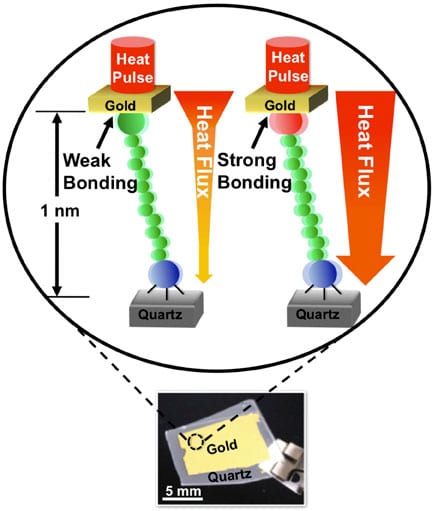
The researchers demonstrated that a single layer of atoms can disrupt or enhance heat flow across an interface.
The researchers first deposited a single layer of molecules on a quartz surface. Next, through a technique known as transfer-printing, they placed a very thin gold film on top of these molecules. Then they applied a heat pulse to the gold layer and measured how it traveled through the sandwich to the quartz at the bottom.
By adjusting just the composition of the molecules in contact with the gold layer, the group observed a change in heat transfer depending on how strongly the molecule bonded to the gold. They demonstrated that stronger bonding produced a twofold increase in heat flow.






